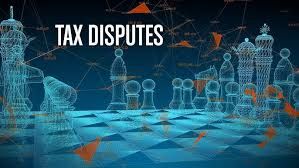Tax Disputes Belong in the Tax Court: High Court Reaffirms Limits of Section 105

Introduction
On 18 September 2025, the High Court of South Africa (Free State Division, Bloemfontein) delivered judgment in Ditsoane Trading and Project CC v CSARS (Case no: 4438/2023). The decision concerned an application for leave to appeal against an earlier order handed down on 29 January 2025.
At the heart of the matter was whether the High Court had jurisdiction to review SARS’s decision to impose an understatement penalty in terms of sections 222 and 223 of the Tax Administration Act 28 of 2011 (TAA).
The facts
The applicant, Ditsoane Trading and Project CC, had been subjected to an understatement penalty by the South African Revenue Service (SARS) in terms of sections 222 and 223 of the Tax Administration Act 28 of 2011 (TAA).
SARS imposed the penalty after concluding that the taxpayer had under-declared its tax liability and failed to provide a satisfactory explanation for the discrepancy. Rather than following the statutory route of lodging an objection and, if necessary, an appeal under Chapter 9 of the TAA, the applicant approached the High Court directly.
It brought a review application in terms of section 33 of the Constitution and the Promotion of Administrative Justice Act 3 of 2000 (PAJA), arguing that SARS’s conduct in levying the penalty was: a) Procedurally unfair, because the taxpayer was not afforded adequate opportunity to respond before the penalty was finalised; b) Irrational and unreasonable, in that the penalty was imposed without proper evidentiary foundation; and c) Ultra vires, contending that SARS acted beyond its lawful powers under the TAA.
The applicant maintained that its case was not a 'tax dispute' over the correctness of an assessment but rather a legality review of SARS’s exercise of public power, which – in its view – fell squarely within the jurisdiction of the High Court.
The law and application
Jurisdiction and the TAA framework
The central question was whether the dispute fell within the specialised tax-dispute mechanisms established by the TAA or within the ordinary jurisdiction of the High Court.
Chapter 9 of the TAA sets out the exclusive dispute-resolution route for assessments and decisions made by SARS as follows:
- Section 104 grants a taxpayer the right to object to an assessment;
- Section 106 empowers SARS to allow or disallow that objection; and
- Section 107 allows the taxpayer, if still aggrieved, to appeal to the Tax Board or the Tax Court.
An understatement penalty imposed under sections 222 and 223 must therefore be challenged via this process.
The section 105 exception in the TAA
Section 105 acts as a jurisdictional gatekeeper in that the default forum for a tax dispute is the Tax Board or Tax Court, and the High Court may intervene only if it grants a direction under section 105, which the courts have held will be appropriate only in exceptional circumstances.
Accordingly, the default forum is the Tax Board or Tax Court, and the High Court may intervene only if it grants a direction under section 105, which the courts have held will be appropriate only in exceptional circumstances.
Guidance from the SCA: CSARS v Rappa Resources (pty) Ltd [2003] ZA SCA 28
The High Court relied on the Supreme Court of Appeal’s judgment in Commissioner for the South African Revenue Service v Rappa Resources (Pty) Ltd. In that case, the SCA reaffirmed that section 105 of the TAA exists to ensure that tax disputes are ordinarily channelled through the statutory objection-and-appeal process rather than the general jurisdiction of the High Court.
The SCA made it clear that there is no automatic right of access to the High Court in disputes concerning assessments or decisions made under the TAA – including understatement-penalty decisions – unless a High Court specifically directs otherwise
Application of the law in Ditsoane Trading
The Court found that the applicant misconceived the nature of its dispute. Despite framing it as a legality review, the essence of the matter was a statutory objection governed by Chapter 9 of the TAA.
Having correctly determined that no section 105 direction had been sought or granted, the High Court held that it lacked jurisdiction, rendering it unnecessary to deal with the merits. It added that jurisdictional findings precede all other determinations, as any order made without jurisdiction is a nullity.
The Court further dismissed the taxpayer’s reliance on the Biowatch principle for cost protection, holding that the dispute did not raise a bona fide constitutional issue but was instead a vexatious attempt to bypass the statutory route.
Conclusion
The High Court concluded that none of the applicant’s grounds for leave to appeal had reasonable prospects of success. Its earlier finding – that the dispute fell squarely within the jurisdiction of the Tax Board or Tax Court, absent a section 105 deviation – was therefore correct.
This decision, read together with Rappa Resources, underscores the TAA’s firm procedural grip in that a) Taxpayers must utilise the specialised mechanisms created for tax objections and appeals; and b) Access to the High Court arises only in exceptional cases where a section 105 direction is granted.
Bonus Comment
Section 105 conditionally suspends the High Court’s jurisdiction in that tax disputes must ordinarily proceed via the objection-and-appeal mechanism in Chapter 9. Following CSARS v Rappa Resources (Pty) Ltd the SCA described departures as permissible only in ‘exceptional circumstances’. More recent guidance, however, explains that what is required is a properly motivated justification for deviating from the statutory route, with the High Court exercising a true discretion in light of factors such as the purely legal nature of the issue, industry-wide implications, or the inadequacy of the Tax Court remedy. In practice, the bar remains high.